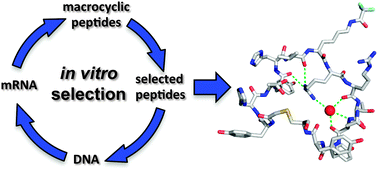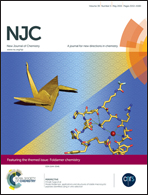Model foldamers: applications and structures of stable macrocyclic peptides identified using in vitro selection
Abstract
Foldamers are synthetic molecules that seek to mimic the structure-forming propensity of biomolecules, such as proteins. However, on a short oligomer scale, peptides often do not fold in the same manner as large proteins, despite being composed of the same amino acid building blocks. Constraints to available peptide conformations can improve these folding characteristics. One important constraint that leads to an increase in folding behaviour is the formation of a macrocycle, while doing this by means other than disulfide bond formation ensures that this structural constraint persists in all biological settings. Additional non-natural features, such as incorporation of amino acids with unusual side chains, D-amino acids, N-alkyl amino acids, and β-hydroxy acids, further mimic the synthetic characteristics of foldamers, giving a class of compounds that is intermediate between natural proteins and synthetic foldamers. In vitro selection methods, such as phage and mRNA display, allow access to de novo peptides based solely on their ability to bind a target, potentially giving access to unique structures and functions. Recently, a series of structures have become available for several such partially synthetic macrocyclic peptides derived from in vitro selection. Here we present an overview of the structural features of these stable macrocyclic peptides and their binding to protein targets, as well as some initial indications of their folding behaviour free in solution, and discuss implications for the future design and functions of foldamers.

- This article is part of the themed collection: Foldamer Chemistry

 Please wait while we load your content...
Please wait while we load your content...